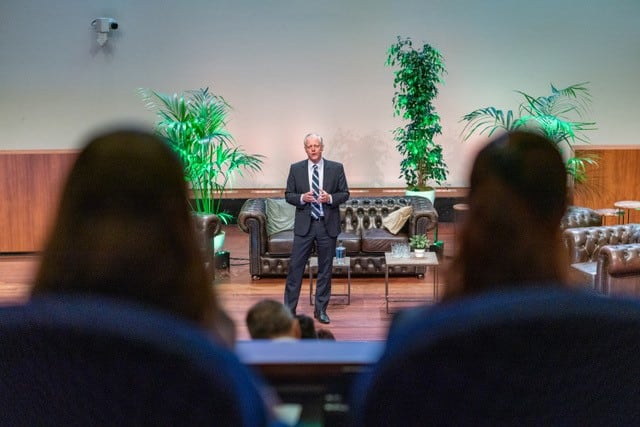Soy is a key commodity. Used as feed for animals and in vegetable oils for human consumption, the ‘king of beans’ also serves as an important source of protein in finished food products.
Soy is a significant commodity for the agricultural sector worldwide. Global soy production is estimated at close to 250 million metric tonnes per year – 80% of which comes from the US, Brazil and Argentina.
Yet, just 2% – approximately 5,000,000 tonnes – is produced sustainably in accordance with the Round Table on Sustainable Soy (RTRS)’s protocols.
“We need to produce soy sustainably,” said Brazil-based soy farmer and member of Rabobank’s managing board, Berry Marttin.
“It is one of the most complex commodities in the world. It goes from the farm, around the world in ships, to supermarkets, and to consumers, so it is a big responsibility.”
At the RTRS annual conference last week, Marttin outlined key focus areas for building soy production on behalf of the agribank, looking at scale, nutrition, sustainability and distribution.
Feeding the future
The human population is estimated to reach 12 billion by 2100. To feed these mouths, and to do so in an environmentally friendly way, “every farmer in the world has to produce sustainably”, said Marttin.

Currently, the world emits 12 gigatonnes of CO2 equivalent to produce food each year, making up close to a quarter of all emissions.
“If we want to keep ourselves at two percent [growth in emissions], we have to reduce that [figure] to four gigatonnes,” Marttin continued.
So what does this mean for the soy sector? “We have to produce more – almost 100% more – while reducing our emissions from 12 to four. It’s huge.
“And deforestation, carbon neutrality, and even positivity in carbon is a very important part of it. There is no reason why farmers cannot sequester carbon and be paid for that.”
Shared responsibility: ‘Hunger is a question of distribution’
Increasing production in soy-producing areas is just one part of solution, Marttin suggested. Distribution is, and will continue to be, a key factor in feeding the future.
“Hunger is a question of distribution,” Marttin told delegates, “because we do know how to produce.” Rabobank is positioning itself as a “player in the value chain” to improve global distribution, and in doing so, reducing food poverty.
Gaining access to the food chain can also empower actors to tackle and reduce food waste, which currently makes up one-third of all food produced, he continued.
“We see ourselves as one of the players that can be crucial on the path to distribution,” Marttin continued, suggesting that responsibility must be across the value chain.

Healthy for us, healthy for the planet
Once production and distribution of food is taken care of, the discussion turns to nutrition. And not just identifying the best nutrients for human and animal populations, but determining which foods also benefit the earth.
This concept made headlines earlier this year when the EAT-Lancet Commission issued the world’s first scientific targets for a healthy diet with a strong focus on climate change, biodiversity loss, and land and water use.
“A lot of discussions today are about what nutrients we are [consuming] is about volume. How many tonnes do we consume? How many CO2 equivalents per tonne?” said Marttin. “But that’s not the right thing, because we don’t consume tonnes. We actually consume nutrients.
“The real [focus] for the future, is that when we talk about nutritious food, we also have to look at what nutrients have the best CO2 equivalent. I think that there we come to soy – being a very important one for that balance.”
Building resilience in the sustainable soy industry will also be key to ensuring it plays a major role in feeding the future, he added.
“Farming…is a very volatile business. We have to deal with the climate, we have to deal with price fluctuations, we have to deal with logistics, we have to deal with policies, [and] we have to think about succession management.
“It’s a business that has a lot of risks. You have to build resilience.”





